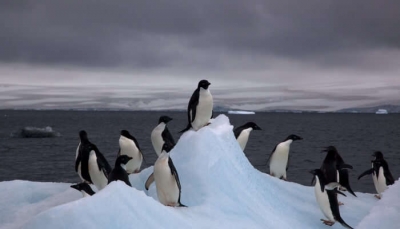
Though Antarctica is considered the least disturbed and contaminated place in the world, it is not without concerns. It is threatened severely on one side by global warming and change, and on the other by aspects such as overshfishing, whaling, sealing (seal hunting), and pollution all caused singularly by humans
The fifth largest continent in the world, Antarctica is a vast expanse of ice-covered landmass surrounded by the sea. Spanning nearly 15 million sq.km., the continent is said to contain almost three-quarters of the planet’s freshwater in its ice sheets. The coldest continent in the world, Antarctica is a polar desert covered in darkness one part of the year.
Antarctica is uninhabited, remote, and has among the harshest terrains and climates in the world. Yet, why do scientists from across the globe brave the elements to study the region? Because it is the world’s most important natural laboratory, and has a very significant role in helping us understand how the world works. Under its several-km-thick ice sheets is the report card of the planet’s climate over the last one million years. This southernmost continent helps us understand global climate change, has a telling effect on the planet’s ocean systems and most importantly, it is an indicator of the overall health of the planet. Although the Antarctic ice may not melt completely any time soon, the alarming rate at which it is melting has raised grave concerns globally on potential sea-level rise across the world.
Under the Antarctic Treaty (signed in 1959 and implemented in 1961), the region has been declared a special conservation area, and several human activities carried out earlier have now been prohibited, in a serious effort to conserve the natural balance of the unique environment.
Wildlife
Due to its vast ice cover, the region supports a limited population of plant species that have adapted to the cold. While there are no trees or shrubs, there are lichens, grass, and algae, among others. However, as if to make up for this, it has a rich marine life. The waters are abundant in krill, a shrimp-like marine creature that is integral to the Antarctic marine food chain. The areas in and around the continent nurtures several species of fish, squids, whales, (including killer whale and blue whale), dolphins, and seals. Among Antarctica’s most popular residents are emperor and adelie penguins that are endemic to the region. Other penguin species found in the region include chinstrap and gentoo penguins. In addition to these flightless birds, petrels, albatrosses, cormorants, gulls, and terms can also be spotted in the area. Apart from seals and the birds, the native land fauna predominantly comprises invertebrates, and there are no completely terrestrial predators in the area.
Did you know?
No polar bears: Though they are called “polar bears, these bears are found only in the Arctic, near the North Pole, and not in Antarctica, the South Pole. Incidentally, polar bears are said to be a very recent offshoot from the brown bear lineage.
Shared parenting: During the harsh winter, the female emperor penguin lays an egg and makes a long and arduous journey back to the sea to nourish herself – till the egg hatches-lasting about two months. Meanwhile, in equally trying environs, the male stands and balances the egg on its feet, covering it with its own feathered skin called a brood pouch. During the two-month guarding, the male eats nothing, braving the Antarctic elements. The female returns around the time that the egg hatches, making the same arduous and long journey back, but this time with a belly full of food for the newborn.
Punctured ozone layer: In 1985, scientists at British Antarctic Survey discovered a hole in the ozone layer above Antarctica, revealing the damage human-made chemicals have done to the Earth’s atmosphere.
Picture Credit : Google




